Posted on August 22, 2018 by Jenny Cromack
Sport-Specific Training; How to Design Your Programme!
The following article will provide an overview of some principles of how to design your training and implement your own sports-specific programme. Designing an effective programme will help you boost your sport-related fitness and performance. There are whole catalogue of exercises, protocols, and approaches to sport-specific training. What follows are some tips and principles that will allow you to optimise your training and performance. The following principles have served me well in my therapy career and given me the framework to create engaging and effective rehabilitation plans. These principles will also be great to help create a performance-focused programme.
The S.A.I.D Principle
The SAID principle encourages you to think about the requirements of your sport. You need to get your mind around the “nitty-gritty” of what your sport requires from you. SAID stands for Specific Adaptations to Imposed Demands. So what does this mean? In a nutshell this refers to the physiological demands that your sport places on your body and its tissues. These demands will be diverse and dependent on the sport, but generally they will include some of the following to consider:
- Impact (e.g., landing, falling etc.)
- Flexibility (e.g., bending, stretching movements etc.)
- Strength/Power/Endurance (e.g., lifting, pushing, pulling etc.)
- Explosive (e.g., jumping, throwing etc.)
- Agility (e.g., direction change etc.)
- Speed Change (e.g., acceleration, deceleration etc.)
This is not an exhaustive list and these factors can overlap. For example, changing direction will consist of agility, speed changes, and explosive movements. It will also require a degree of flexibility and power. All these things place a physiological demand on our muscles, ligaments, bones, tendons etc. If we want to optimise these tissues responses and coping abilities we need to understand what adaptations occur when these tissues experience those demands.
That is where the specific adaptation element comes in. Put simply, we need to be aware of what happens to the tissues when they are loaded in this way (e.g., when we stretch a tissue repeatedly it will become longer and allow more movement). If our sport loads a tissue in this specific way it is probably because it is beneficial for performance (obviously unless we are doing things wrong). So how do you put this into your training design?
Implementing the SAID Principle!
What I offer here are some simple questions to ask yourself and tips to help you when sitting down to design your plan. I will give an example for each of the questions and tips based on my sport of golf to give you an idea of what things to consider.
- What do I have to do to perform well in my sport? (e.g., I need to rotate through my core and lumbar spine during my backswing and then generate power through my core and hips to drive through my downswing)
- What demands does this place on, and require of, my body and its tissues? (e.g., I need to be flexible in my lumbar spine joints and ligaments, and have powerful core rotator muscles and hip extensors)
- How do my tissues respond to these demands? (e.g., liagments get longer, vertebrae get more mobile, and my obliques, abdominals, and glutes will develop larger type II muscle fibres)
- What is the frequency, intensity, and duration of the demands like? (e.g., How many swings do I make per round? What is the range of power I use over a round? How long is an average round for me?)
All of these thing will determine how you design your programme, so ask yourself one more question:
- How can I replicate these movements and demands in my training?
- Don’t overly isolate – when performing your muscles will work together so train them that way.
- Be creative – design exercises/drills that mimic the movements/demands you identify.
- Utilise sporting equipment – bring in your sports gear, such as golf clubs.
- Select reps/sets/load to match your demands – the volume of your exercises will seek to match how many times you perform the movements, how intense the movements are, and the duration you perform these for.
How Would My Golf Programme Look?
First I might include some mobility exercises that encourage lumbar spine rotations, such as using a band to passive stretch me into a fully rotated position through my lumbar spine. Active mobility work that involves repeated rotations with a club would also be beneficial.
Banded Static Rotation:
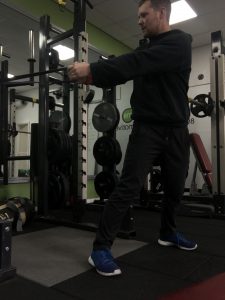
Active Club Rotations:
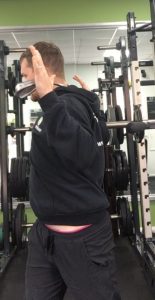
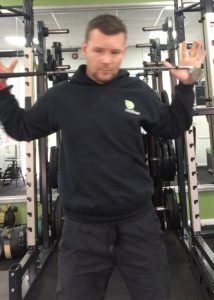
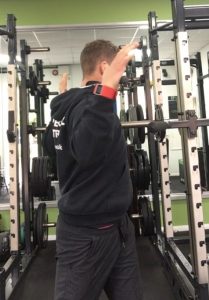
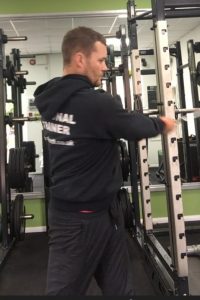
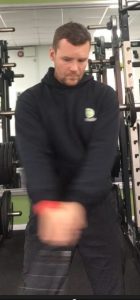
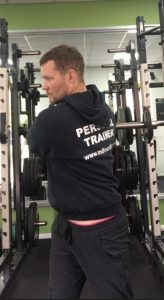
To address the power demand I would utilise a club, or special bar. By gripping the bar and positioning myself to simulate my swing position I can make this exercise specific to the sporting demands. Loading this bar/club with a band or resistance cord could provide some reistance and encourage me to generate force through my obliques and gluteals.
Bungee Swing Rotations:
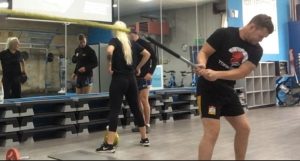
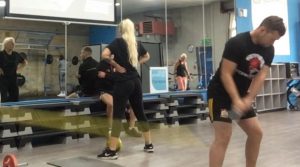
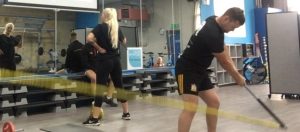
Regarding the layout of my programme these two elements would only be a part of it and I would set it out as follows:
- Superset: A1) Lumbar Rotations > A2) Banded Power Swings
- Sets: High number to replicate the high frequency of swings during a round (Even as high as 10 sets).
- Reps: Low to replicate the intermittent nature of swings (x 3-5).
- Load: Moderate to encourage muscular force, but allow for speed (powerful) contractions.
- Rest: Moderate rest to replicate walks in between swings (could include a low intensity cardio exercise as active rest).
Summary
In summary to make sure you create a plan that optimises your fitness and performance make sure you consider the following:
- Specific demands of your sport – bodily movements, external forces etc.
- Tissue Adaptations – what your body does to cope with these demands.
- How you can make your exercises, sets, reps, and rest match these things.
Ultimately, if you follow these principles you will not be far from a great, specific programme that will boost your results and performace. One last thing, do nt be afraid to be creative. Think outside the box.

